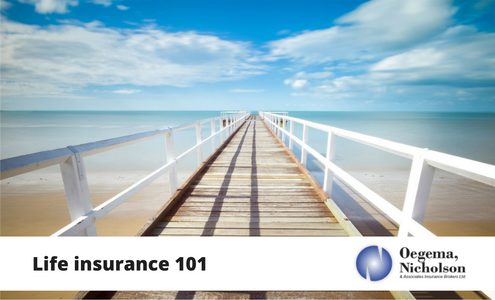
Life insurance: What you need to know before you start
While it’s not often discussed, life insurance is one of the most valuable protections you can put in place. Designed to mitigate any financial risk or burden on your family should a catastrophic event occur, life insurance can cover the cost of your debt and will provide much needed financial assistance for your beneficiaries. And while you may feel like you’re adequately covered through group life insurance coverage with your employer, the reality is you’re likely not covered for the full amount you will need, and you are only insured as long as you’re employed with your organization. Deciding on and coordinating long term planning can be daunting. There are many types of insurance and variations on those policies. The best place to start is to find an insurance broker you trust who can help you make sense of it all, and who will help you decide on a plan that is unique to your needs.  To start, you’ll be asked about the type of coverage you’re looking for and general health questions. Here are two questions to consider before you get started:
To start, you’ll be asked about the type of coverage you’re looking for and general health questions. Here are two questions to consider before you get started:
Question one: What type of insurance do you need?
There are two types of insurance coverage: Term insurance – designed to provide protection on the short term – and permanent insurance – which guarantees consistent coverage and doesn’t need to be renewed. A bit about each option:Term insurance:
These temporary policies can be purchased for the short term, or as long as a 25-year mortgage. Because the premiums you’re paying are lower it’s the most popular among first time insurance buyers and is suitable for short term coverage when you’ve take on a large amount of debt such as a mortgage or business loan. May people choose temporary life insurance while they’re caring for dependent children and are carrying a mortgage but refine their needs and select a permanent option as their kids age and their debts are repaid. More about term insurance.Permanent insurance:
These policies are meant to keep you covered as you mature and you’re protected regardless of health status changes. Because of this comprehensive coverage, the premium will be higher when you’re younger, but will be lower as you mature. The largest advantage of permanent insurance is the accrual of cash value. You will be able to grow the investment tax free as you pay into your coverage, and your beneficiaries receive a tax free, cash benefit upon your passing. More about permanent insurance.Question two: How much insurance do you need?
The amount of coverage you choose should be sufficient to cover your debts and to provide your family with adequate coverage to cover living costs and the care of dependent children. While coverage options range from $10,000 – $5,000,000, the average Canadian chooses coverage within the $750,000 – $1,000,000 range. Make sure your policy takes your unique needs into account. When determining your level of coverage you should factor in:- Coverage for final expenses
- Adequate coverage of care costs through your child’s life, including post-secondary education
- Debt repayment
- Funds to supplement your family’s savings and everyday expenses from missing income

